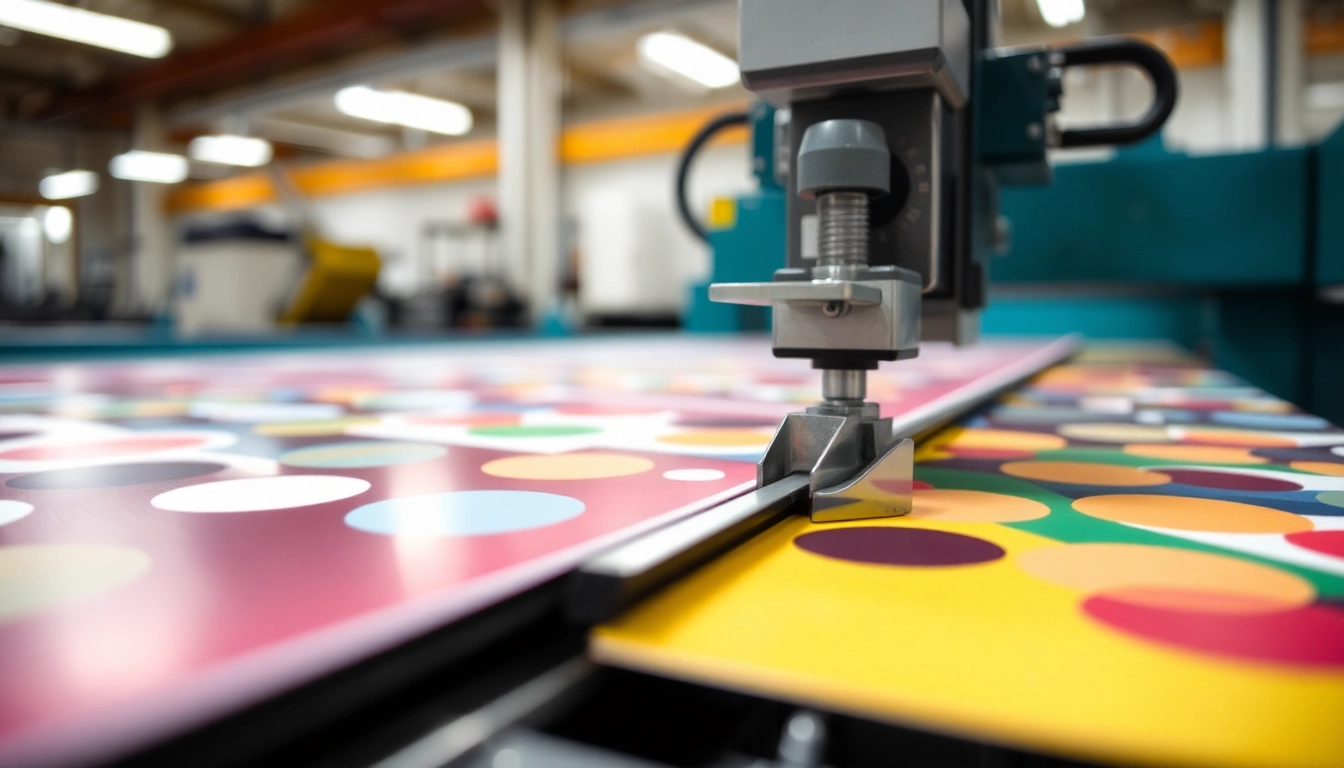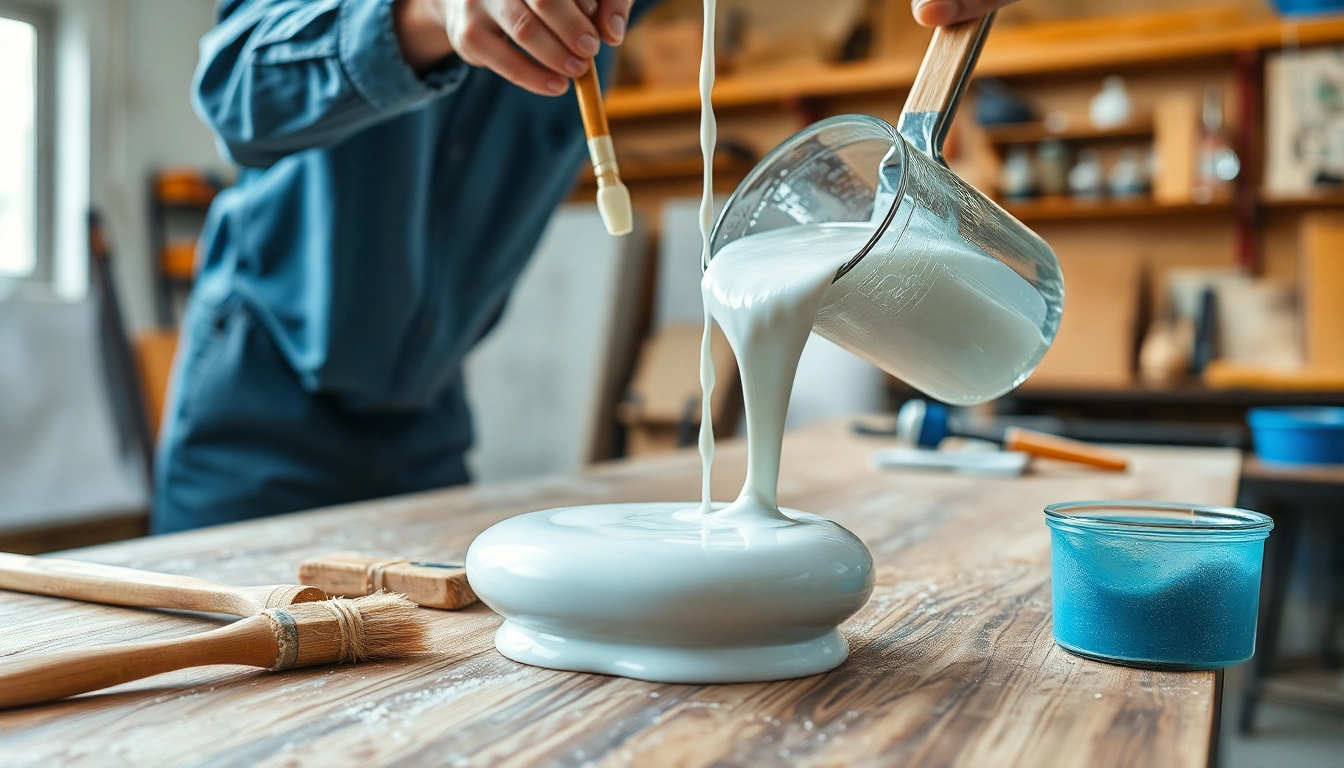Understanding Precision Die Cutting
What is Precision Die Cutting?
Precision die cutting is a manufacturing process used to cut intricate shapes and designs from various materials such as paper, plastic, rubber, and metal. Utilizing sharp, durable dies, the technique enables manufacturers to achieve the exact specifications required for each application. Both rotary and flatbed die cutting methods can be employed depending on the material and the complexity of the cut. Rotary die cutting uses cylinder-shaped dies that rotate and cut materials as they pass through, while flatbed die cutting uses a static platform where the die presses down on the material.
This method is widely appreciated for its accuracy, efficiency, and ability to produce repeatable results. Industries such as automotive, packaging, and electronics heavily rely on precision die cutting to create components ranging from gaskets and seals to intricate packaging designs.
Applications of Precision Die Cutting
Precision die cutting has numerous applications across various sectors, including:
- Packaging: Precision die cutting is essential in producing packaging materials, ensuring that boxes, inserts, and protective packaging fit perfectly.
- Automotive: Components such as insulation, gaskets, and seals are made with precision die cutting to ensure they meet strict performance standards.
- Medical: The healthcare industry uses precision die cutting for making custom-shaped products, including bandages, surgical drapes, and sterilization pouches.
- Appliances: Appliance manufacturers often rely on precision cutting for layers in insulation and other components that require a precise fit.
- Electronics: The electrical and electronics sector utilizes precision die cutting to create parts such as circuit boards and layering in devices.
Key Benefits of Using Precision Die Cutting
The benefits of precision die cutting are substantial, including:
- High Accuracy: This process yields consistent results with minimal deviation, essential for parts that need to fit precisely.
- Versatility: Able to cut a wide range of materials, precision die cutting caters to numerous industry needs.
- Speed: Compared to other cutting methods, die cutting is notably fast, leading to greater efficiency in mass production.
- Cost-effectiveness: High production rates can lead to lower costs per unit, especially when dealing with large volumes.
- Minimal Waste: Precision die cutting optimizes material usage, resulting in reduced waste during production.
The Process of Precision Die Cutting
Types of Machines Used in Precision Die Cutting
In precision die cutting, various machines are utilized based on the type of cutting method being employed. These include:
- Flatbed Die Cutters: Often used for thicker materials; flatbed cutters lower a die onto material flatly, ideal for geometric shapes.
- Rotary Die Cutters: These machines are designed for high-volume production, cutting continuously through rotating dies, suitable for flexible materials.
- Laser Cutters: Utilizing laser technology, these cutters offer high precision and are great for intricate designs.
- Punch Presses: Used for bulk production, these presses apply significant force to cut material using various die shapes.
Step-by-Step Workflow of Precision Die Cutting
- Design Creation: A detailed design is drafted using CAD software to visualize the final product and ensure all specifications are met.
- Die Creation: Based on the design, a die is manufactured from hard steel, rubber, or other materials capable of efficiently cutting the chosen substrate.
- Material Preparation: Sheets or rolls of the material are gathered, inspected for quality, and set into the machine.
- Cutting Process: The machine operates, pressing or rolling the die across the material, cutting out the desired shapes.
- Inspection: Post-cutting, each piece is inspected for quality assurance, ensuring that it meets the design specifications.
- Finishing: Any additional processes like punching, scoring, or folding are completed to prepare it for final use.
Material Selection for Precision Die Cutting
The choice of material is critical in precision die cutting, impacting the end product’s functionality and appearance. Common materials used include:
- Paper and Cardboard: Ideal for crafting and packaging applications, providing a clean and professional finish.
- Plastics: Including PVC, PET, and acrylic; these materials are popular due to their versatility and durability.
- Foams: Often used for insulation and cushioning, different foam densities can be cut to meet specific industry needs.
- Metals: Thin sheets of metals can be processed for machined parts, particularly in automotive and aerospace applications.
Choosing a Precision Die Cutting Service
Factors to Consider When Selecting a Provider
When seeking a precision die cutting service, various factors must be assessed to ensure optimal results:
- Experience and Capabilities: Evaluate the provider’s experience in your specific industry and their range of available cutting technologies.
- Quality Assurance: Ensure that the manufacturer adheres to strict quality standards and has robust inspection protocols in place.
- Lead Times: Look into their production capabilities, considering both initial lead times and capacities for larger orders.
- Cost Structure: Obtain clear pricing information and assess how costs vary depending on materials and complexity.
Common Mistakes to Avoid in Precision Die Cutting
While engaging in precision die cutting projects, avoiding specific pitfalls can save time and resources:
- Miscommunication: Ensure clear communication on specifications, materials, and timelines to avoid discrepancies.
- Underestimating Material Quality: Selecting bottom-tier materials can undermine the integrity and effectiveness of the final product.
- Neglecting Prototype Testing: Always test prototypes to identify and correct issues before full-scale production.
- Ignoring Technological Advancements: Staying up to date with the latest technologies can significantly improve the precision and efficiency of your die cutting processes.
Getting the Most Value from Your Precision Die Cutting Projects
Maximizing value in precision die cutting projects requires strategic planning:
- Defining Objectives: Clearly outline the end goals, including quality and quantity requirements, to guide the manufacturing process.
- Regular Communication: Maintain open lines of communication with the provider throughout the project to ensure transparency and flexibility.
- Feedback Loops: Implement a system for feedback on prototypes to enhance the quality and fit of the final products.
- Reviewing and Adjusting: Post-project analysis can help identify areas for cost reductions and efficiency improvements in subsequent jobs.
Quality Control in Precision Die Cutting
Tolerances and Standards in Precision Die Cutting
Tolerances refer to the allowable deviations in dimensions of the die-cut parts. In precision die cutting, standard tolerances generally range from +/- 0.005 inches for steel rule dies, resulting in final part tolerances of +/- 0.01 to +/- 0.15 inches. It is vital that manufacturers adhere to these tolerances to ensure parts fit correctly and function as intended.
The precision level can differ based on material, die type, and intended application, so understanding these parameters can enhance performance in the end-use application.
Testing and Inspection Methods
Various testing and inspection methods are integral to maintaining quality in precision die cutting:
- Visual Inspection: Regular checks can catch obvious defects or inconsistencies in color or shape.
- Gauge Measurement: Employing tools such as calipers and micrometers to measure finished components against the predefined specifications.
- Functional Testing: For specific applications, testing the end product in its intended environment ensures its reliability.
Ensuring Consistency in Precision Die Cutting Outputs
Achieving consistent quality in precision die cutting outputs hinges on several factors:
- Standard Operating Procedures: Documented procedures can help in methodizing processes, minimizing variations in outputs.
- Regular Maintenance: Keeping machines in optimal condition through routine maintenance can prevent issues that affect production quality.
- Training: Well-trained staff are crucial to ensuring adherence to procedures and protocols for producing high-quality die cut parts.
Industry Trends and Future of Precision Die Cutting
Emerging Technologies in Precision Die Cutting
The field of precision die cutting is continuously evolving, with new technologies enhancing capabilities:
- Automation: Integration of automated systems can improve efficiency and accuracy, reducing human error.
- Computer Numerical Control (CNC): CNC machines allow for intricate cutting that was once impossible, increasing design possibilities.
- 3D Printing: While not a direct competitor, 3D printing is influencing die-cut designs, enabling hybrid manufacturing approaches.
Eco-Friendly Practices in Precision Die Cutting
Environmental sustainability is becoming crucial in manufacturing processes, including precision die cutting. Companies are adopting eco-friendly practices such as:
- Material Sourcing: Using sustainable materials that are either recyclable or biodegradable can significantly reduce ecological footprints.
- Waste Reduction: Optimizing cuts through efficient layouts to minimize scrap material enhances environmental conservation.
- Energy Efficiency: Investing in energy-efficient machines and practices helps lower the carbon footprint.
The Future Demand for Precision Die Cutting Services
The demand for precision die cutting services is expected to grow as industries recognize its benefits in producing high-quality components swiftly. Trends suggest growth driven by:
- Customization: As businesses increasingly require tailored solutions, precision die cutting will play a pivotal role in meeting these demands.
- Rapid Prototyping: The need for fast prototyping in product development will further increase the reliance on precision die cutting.
- Expansion of Industries: Growth in the automotive, medical, and electronics sectors will drive the need for precision die cutting solutions.



